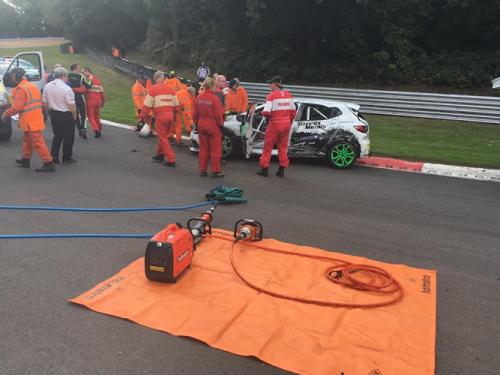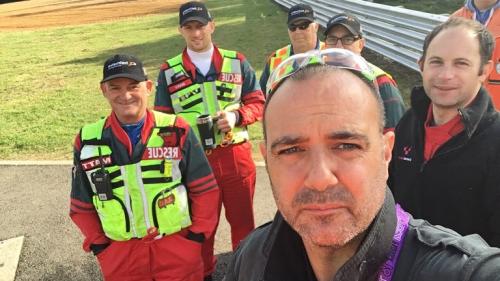The Importance of the Human Factor in Rescue
I was recently invited to the Brands Hatch Motor Racing Circuit in the UK to take part in some research related to motor sports rescue. Whilst I was there and our research was complete, I was kindly allowed to join the on track safety teams during the final races of the British Touring Car Championship (BTCC), which is the most popular motorsport in Britain.
Of course I have been well aware of motor sports rescue teams for many years and have met many of the volunteers who perform this role all around the world, however up until my visit, I had never had the opportunity to put my two passions together i.e. rescue and motorsports, in particular the BTCC series which I have been watching since I was a small boy.
Technical and medical: one team
Whilst sitting in the rescue vehicles, myself and the team members talked equipment, tactics and approaches and while the basis of vehicle extrication is essentially the same on track as it is on road, there are fundamental differences. Of course the Team Approach still applies, but the immediacy of attendance of both technical and medical rescuers adds a whole new level of dynamic to the process. Not only do they arrive on scene together, but once there, their working relationship is immediate and harmonious due to them essentially being one team; training and working together for (in some cases) many years. They are very close.
Theory brought to life
Luckily for me (but unluckily for the driver concerned) our theoretical discussion was brought to life during one of the support races, The Renault Clio Cup. In this race car number 8, driven by Luke Kidsley, decided to leave the safety of the tarmac, explore the grass and then redesign the wall. The mechanism of injury was immediately identified as severe; well I guess a car barrel rolling 4-5 times would raise your index of suspicion.
Note the Mechanism of Injury. Luke Kidsley going off at Brands Hatch.
Perfect teamwork
When we arrived (within 60 seconds of the crash) I witnessed a fantastically professional, focussed team who worked together seamlessly. The communication on scene was concise, precise and effective. The clinical assessment of the patient was informing the main extrication plan whilst all of the time, equipment was being prepared (whether it would be used or not), which was a perfect example of simultaneous activity. The team were clearly thinking three or four steps ahead which is the key to success. Despite the severe mechanism and thanks to the nature of well-designed race vehicles, Luke was able to self-extricate himself following medical assessment, after which he was transported to the medical centre for observation.

Quick and professional teamwork on the race track. Luckily, no tools were required as the driver was able to self-extricate.
Sheer professionalism
I have to confess that before I spoke to, worked with and witnessed these guys and girls in action I never expected to be blown away by their sheer professionalism. Let’s face it, these volunteers get (relatively) little time to train and seldom get the chance to really test their skills for real (in relation to full time rescuers). And yet, if I ever have a talent transplant and miraculously become a racing driver, I know I could do so and feel very safe when my talent runs out and things go wrong. What I witnessed was professionalism at least equal to any team I have ever worked with; volunteer or paid/career.
Importance of the human factor
The moral to this blog is that this experience really reinforced my long held belief that human factors are just as important as any piece of equipment, policy, procedure or technique. The ability to safely, efficiently and successfully apply any level of skill in a moment where we, as humans, have the right to panic is phenomenal. Of course this goes for all rescuers around the world, paid, unpaid, career or volunteers and it applies to any emergency situation. I just wonder how much time, effort or thought you give to the human elements of what you do each and every day. Our time critical emergency tasks are performed as teams and therefore human factors MUST be high on our priority list when it comes to training and pre-planning.
I would like to thank the members of the British Automobile Racing Club (BARC) for their kind invite to assist with their research and their hospitality allowing me to indulge my passions for the day. In case you were wondering what my role was during the rescue: I got some stability blocks from the truck. I decided to leave the rest to the professionals, because they really are!

Selfie with some members of the safety team.
As ever I welcome your feedback
Ian Dunbar